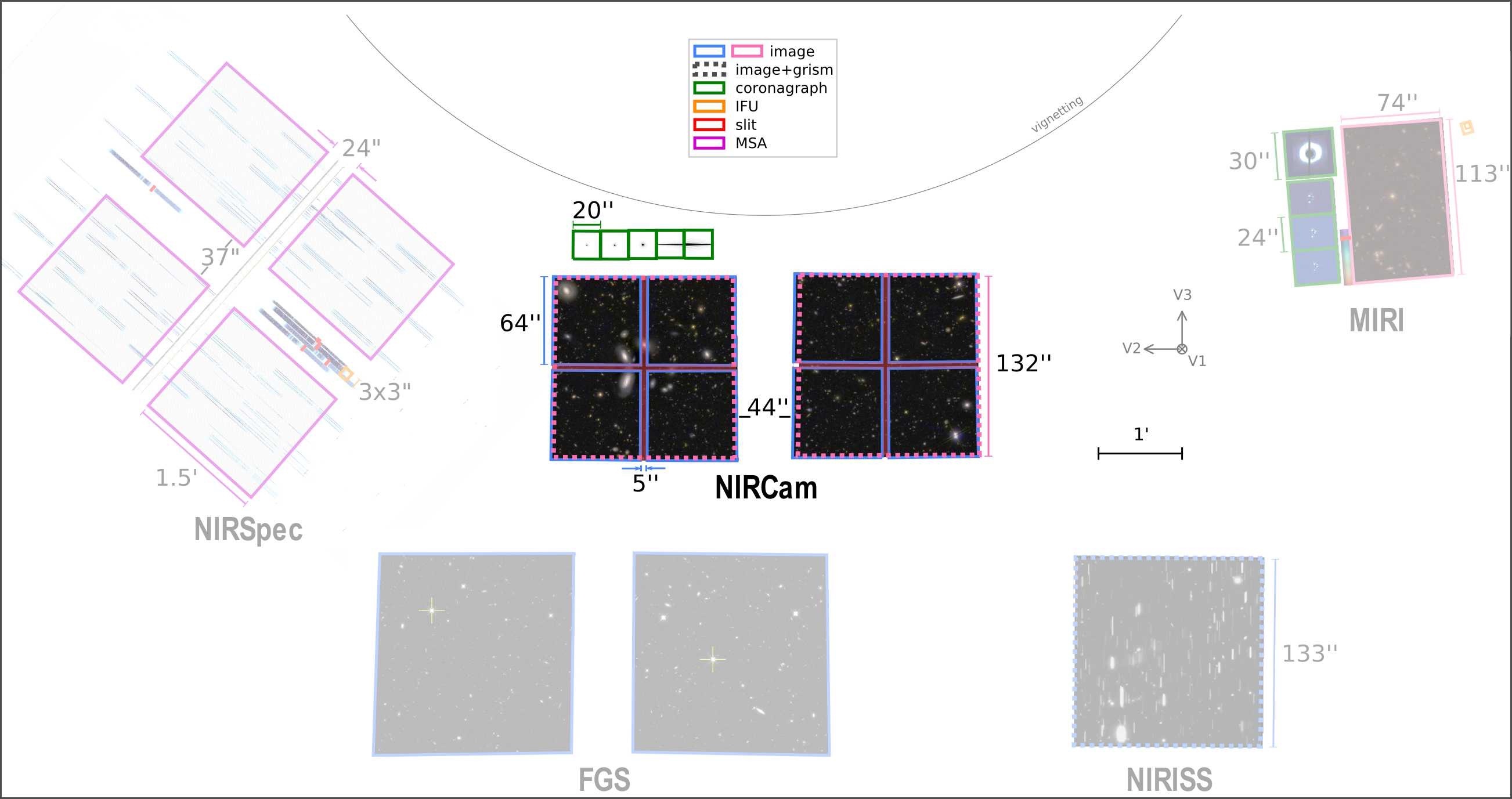NIRCam Field of View
JWST's NIRCam observes a 9.7 arcmin² field with a ~44" gap separating two 2.2' × 2.2' areas. The short wavelength images also have 4"–5" gaps between detectors.
The 2 NIRCam modules each observe a 2.2’ × 2.2’ area that are separated by ~44" and cover 9.7 arcmin² total. The full field of view may be imaged at short and long wavelengths simultaneously using dichroics. Short wavelength (0.6–2.3 µm) and long wavelength (2.4–5.0 µm) fields overlap well, but not perfectly.
Each module has 4 short wavelength detectors arranged in a 2 × 2 array and one long wavelength detector. The resulting short wavelength images have gaps of 4"–5" between detectors.
The gap between modules is 42"–44" for the short wavelength detectors and 45"–48" for the long wavelength detectors. NIRCam primary dithers and mosaics may be used to cover all of these chip gaps.
Smaller subsections of the field of view may be observed by using NIRCam detector subarrays. Apertures define the pointing and extent of each observation in the field of view.

